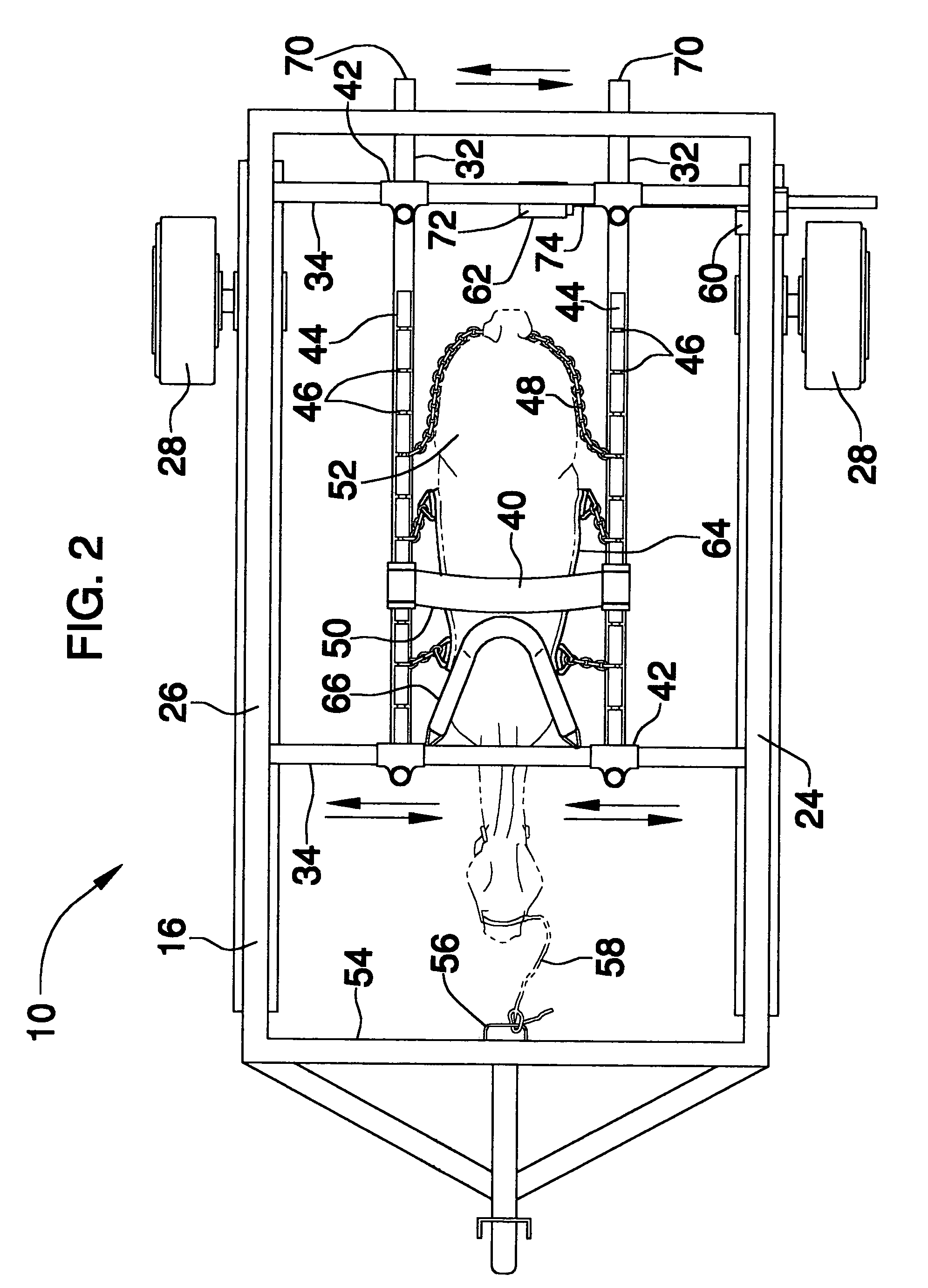Stabilizer for shoeing a horse
a stabilizer and horse technology, applied in the field of restraining apparatus, can solve the problems of long-standing necessity of close-in work with horses, such as shoeing and veterinary procedures, and can be dangerous, and achieve the effects of low manufacturing cost, low price of sale, and economic shoeing of horses
- Summary
- Abstract
- Description
- Claims
- Application Information
AI Technical Summary
Benefits of technology
Problems solved by technology
Method used
Image
Examples
Embodiment Construction
[0036]Referring now to the drawings, and particularly to FIGS. 1-5, a preferred embodiment of the stabilizer for shoeing a horse of the present invention is shown and generally designated by the reference numeral 10.
[0037]In FIG. 1, a new and improved stabilizer for shoeing a horse 10 of the present invention for securely holding horses during shoeing operations or veterinary procedures is illustrated and will be described. More particularly, the stabilizer for shoeing a horse 10 has an open rectangular frame 12 with uprights 14 at each of the four corners and horizontal supports 16 connecting the tops of the uprights 14 and the bottoms of the uprights 14 to form the frame 12. The rear of the frame 12 would not have a horizontal support 16, leaving an opening for ingress and egress of the horse. The uprights 14 and the horizontal supports 16 would be made of steel tubing and would form a frame 12 approximately 12 feet long×7 feet high×6 feet wide. The front of the frame 12 features ...
PUM
 Login to View More
Login to View More Abstract
Description
Claims
Application Information
 Login to View More
Login to View More - R&D
- Intellectual Property
- Life Sciences
- Materials
- Tech Scout
- Unparalleled Data Quality
- Higher Quality Content
- 60% Fewer Hallucinations
Browse by: Latest US Patents, China's latest patents, Technical Efficacy Thesaurus, Application Domain, Technology Topic, Popular Technical Reports.
© 2025 PatSnap. All rights reserved.Legal|Privacy policy|Modern Slavery Act Transparency Statement|Sitemap|About US| Contact US: help@patsnap.com



